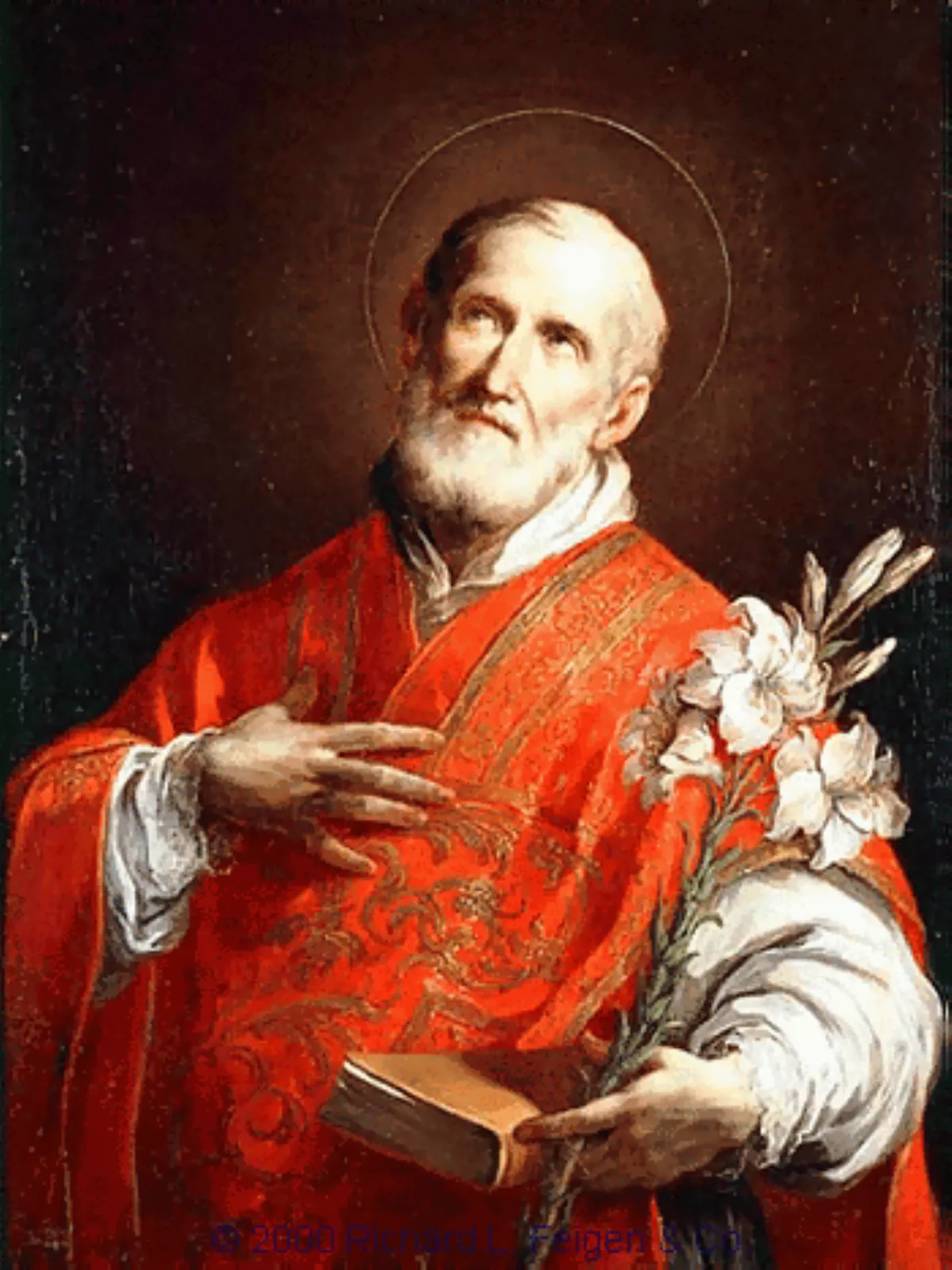 1.
1. Philip Neri is sometimes referred to as the Second Apostle of Rome after Saint Peter.

Philip Neri's work played a significant role in the Counter-Reformation, especially within the city of Rome.
Philip Neri initially gained prominence for his pastoral care and efforts to minister to marginalized communities, including prostitutes and the destitute.
Philip Neri engaged in limited political activity, most notably when he intervened to secure the reconciliation of Henry IV of France with the Church.
Philip Neri's legacy is associated with the Seven Churches Walk, a pilgrimage he initiated, and his promotion of musical forms such as the "laude" and oratorios, which had lasting impacts on sacred music.
Philip Neri was carefully brought up, and received his early teaching from the friars at San Marco, the famous Dominican monastery in Florence.
Philip Neri was accustomed in later life to ascribing most of his progress to the teaching of two of them, Zenobio de' Medici and Servanzio Mini.
At the age of 18, in 1533, Philip Neri was sent to his uncle, Romolo, a wealthy merchant at San Germano, a then Neapolitan town near the base of Monte Cassino, to assist him in his business, and with the hope that Philip Neri might inherit Romolo's fortune.
Philip Neri did gain Romolo's confidence and affection, but during his stay he experienced a religious conversion.
For seventeen years Philip Neri lived as a layman in Rome, probably without thinking of becoming a priest.
Many of Philip Neri's disciples found their vocations in the infant Society of Jesus.
In 1548, together with his confessor, Persiano Rossa, Philip Neri founded the Confraternity of the Most Holy Trinity of Pilgrims and Convalescents, whose primary object was to minister to the needs of the thousands of poor pilgrims who flocked to Rome, especially in jubilee years, and to relieve the patients discharged from hospitals but who were still too weak for labor.
In 1551, Philip Neri received all the minor orders, and was ordained deacon and finally priest.
Philip Neri thought of going to India as a missionary but was dissuaded by his friends who saw that there was abundant work to be done in Rome.
Philip Neri spent much of his time hearing confessions and effected many conversions in this way.
In 1564, the Florentines requested that Philip Neri leave San Girolamo to oversee their newly built church in Rome, San Giovanni dei Fiorentini.
Philip Neri was at first reluctant, but by consent of Pope Pius IV he accepted while remaining in charge of San Girolamo where the exercises of the Oratory were kept up.
The new church was consecrated early in 1577, and the clergy of the new society at once resigned the charge of San Giovanni dei Fiorentini; Philip Neri himself did not leave San Girolamo until 1583, and then only by an injunction of the pope that he, as the superior, should reside at the chief house of his congregation.
Philip Neri was at first elected for a term of three years but in 1587 was nominated superior for life.
Philip Neri saw that the pope's attitude was more than likely to drive Henry to relapse and rekindle the civil war in France, and directed Caesar Baronius, a member of the Oratory who was then the pope's confessor, to refuse the pope absolution and to resign the office of confessor unless the pope withdrew the anathema.
Philip Neri continued in the government of the Oratory until his death.
Philip Neri embodied several contradictions, combining popular veneration with intensely individual piety.
Philip Neri became deeply involved with the Church while seeking to reform a corrupt Rome and an indifferent clergy.
Philip Neri possessed a playful sense of humor, combined with a shrewd wit.
Benedict XIV, who reorganized the rules for canonization, decided that Philip Neri's enlarged heart was caused by an aneurysm.
Philip Neri had no difficulties in respect of the teaching of his Church.
Philip Neri was beatified by Paul V in 1615 and canonized by Pope Gregory XV in 1622.
Philip Neri is one of the influential figures of the Counter-Reformation and is noted for converting to personal holiness many of the influential people within the church itself.
The congregation Philip Neri founded is of an original stamp, little resembling a monastery of the older type, and its rules leave considerable freedom of action compared with traditional religious foundations.
The Congregation of the Oratory of Saint Philip Neri is a pontifical society of apostolic life of Catholic priests and lay brothers who live together in a community bound together but without formal vows.
In France, a separate and distinct foundation from the Oratory of Saint Philip Neri was founded, though inspired by St Philip's model.
Philip Neri encouraged the singing of the Lauda spiritual in his oratory services.
Philip Neri sometimes led "excursions" to other churches, often with music and a picnic on the way.
In 1553, Philip Neri started the tradition of making a one-day pilgrimage to seven churches, starting from St Peter's Basilica and ending at the Basilica di Santa Maria Maggiore.
The tradition of visiting all seven churches was started by Philip Neri to combine conviviality and the sharing of a common religious experience through discovering the heritage of the early saints.
Philip Neri drew up an itinerary that included visits to St Peter's Basilica, then St Paul Outside-the-Walls, St Sebastian's, St John Lateran, Holy Cross-in-Jerusalem, St Lawrence-Outside-the Walls, and finally St Mary Major.